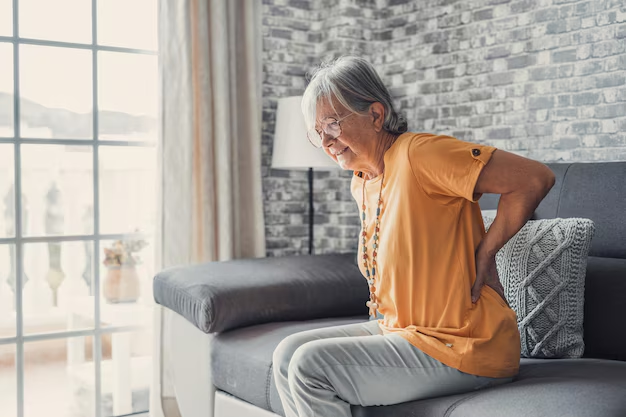Does Osteoporosis Cause Pain Without Fractures? Here's What You Need to Know
Osteoporosis is often deemed a silent disease, silently creeping until it unveils itself through fractures. But can it cause pain even when no fractures occur? It’s a question that many people, especially those at risk, ponder over. Understanding the nuances of osteoporosis and its potential discomforts without fractures can provide a clearer pathway to its management and long-term care.
Understanding Osteoporosis
Osteoporosis is characterized by decreased bone density and mass, making bones more fragile than usual. Bone fragility increases fracture risks, especially in the wrists, spine, and hips. These fractures are typically the culprits behind the pain that most associate with osteoporosis. However, the condition itself, devoid of any breakage, might not directly induce pain.
Pain and Osteoporosis: What’s the True Link?
While osteoporosis inherently doesn’t cause pain, the structural changes it brings about might contribute indirectly to discomfort:
- Spinal Changes: Progressive bone loss can lead to changes in posture, such as kyphosis, a forward curvature of the spine, which can cause back and neck pain over time.
- Bone Weakness: The increased vulnerability of bones might lead to minor, unnoticeable stress fractures, especially in the vertebrae, causing chronic or acute back pain.
Most of the pain associated with osteoporosis is thus tied to these secondary factors rather than the bone density issues themselves.
Managing Discomfort and Seeking Solutions
For those dealing with discomfort that might not be tied to visible fractures, managing lifestyle and possibly seeking medical advice is essential. Implementing weight-bearing exercises, ensuring adequate calcium and vitamin D intake, and avoiding smoking and excessive alcohol can fortify bones and possibly alleviate related discomforts subtly attributed to osteoporosis.
Exploring Financial and Support Resources
For many battling osteoporosis, especially if it affects their mobility and daily functioning, financial stress can compound physical discomfort. Government aid programs, financial assistance, and educational grants could be pivotal resources:
- Individuals might qualify for Medicare or Medicaid to alleviate the costs of medical assessments and treatments.
- Supplemental Security Income (SSI) programs could provide monthly stipends for those incapacitated by severe osteoporosis.
- State-specific health programs often assist with the provision of affordable medications or calcium and vitamin D supplements.
Apart from health-focused support, exploring credit card solutions or debt relief options can provide financial breathing room, enabling individuals to focus on health and wellness without monetary stress.
Accessibility to Education and Continued Learning
Educational grants and scholarships may be available for personal development or vocational training, especially for those turning to new professions due to physical constraints. Skills development grants can empower those affected by osteoporosis to transition to less physically demanding roles.
As individuals navigate the complexities of osteoporosis, understanding its attributes, direct effects, and accessing supportive resources can significantly ease the challenges it poses. With the right tools and information, living well with osteoporosis is entirely possible, paving the way for a life of comfort, security, and thriving wellness.
🚀 Financial & Educational Resources to Consider:
- 💼 Social Security Disability Insurance (SSDI): Financial support for those with severe osteoporosis preventing full-time work.
- 🏥 Medicare and Medicaid: Health coverage that might help cover costs of osteoporosis treatment.
- 📚 Pell Grants: Federal grants for those seeking to pursue higher education or new career training.
- 💳 Low-Interest Medical Credit Cards: Can be useful for spreading the cost of medical expenses over time without high-interest burdens.
- 💡 Nonprofit Debt Counseling Services: Guidance on managing financial challenges effectively.
- 🌟 Local Community Health Services: Often provide affordable screenings and health checks.
By tapping into these resources, individuals dealing with osteoporosis can find relief, support, and avenues for continued growth and wellness.

Related Topics
- a Nurse Is Caring For a Client Who Has Osteoporosis.
- a Percutaneous Is Performed To Treat Osteoporosis Related Compression Fractures
- Can Alcohol Cause Osteoporosis
- Can I Do Pilates If I Have Osteoporosis
- Can I Reverse Osteoporosis
- Can Men Get Osteoporosis
- Can Osteoporosis Affect Teeth
- Can Osteoporosis Be Cured
- Can Osteoporosis Be Painful
- Can Osteoporosis Be Reversed